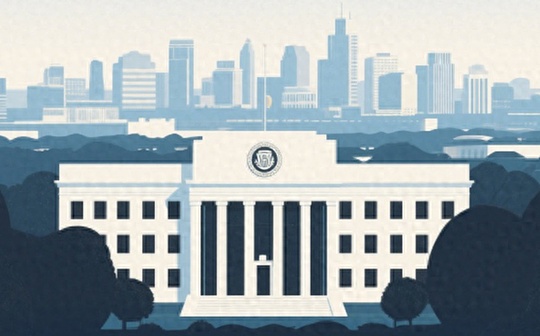
Wu Yu, Jin Shi Data
“Fed Speaker” Nick Timiraos wrote that no matter what the outcome, there may be at least three dissenting votes at the Fed’s December meeting——If the Fed decides to keep interest rates unchanged, the three governors appointed by Trump will vote against it; if the Fed cuts interest rates by 25 basis points, at least three people will dissent.
Fed officials are facing a challenge: resolving disagreements over setting interest rates in the absence of new economic data to guide complex decisions.
Federal Reserve Vice Chairman Philip Jefferson illustrated the central bank’s dilemma on Monday by acknowledging the risks of stubborn inflation and weak employment conditions – two opposing threats that require opposing policy responses.
“The evolving balance of risks underscores the need for gradual rate cuts,” Jefferson said in a speech at the Kansas City Fed.
Despite this view, Jefferson’s comments neither supported a long-term pause in interest rate cuts nor provided a basis for a rate cut at next month’s meeting – a decision that is becoming extremely controversial.
As a member of the Fed’s leadership, Jefferson typically reinforces the views of Chairman Jerome Powell, who is expected to play a key role in reconciling a divided policy-setting committee next month.
Market expectations for a rate cut by the Federal Reserve at its Dec. 9-10 meeting have steadily declined in recent weeks, a rarity during a period when no major economic indicators are released.
Data from the Chicago Mercantile Exchange (CME Group) showed that in early trading on Monday, the market’s implied probability of a rate cut was about 45%, down from 60% a week ago and down from 90% at the October 28-29 meeting.
Jefferson on Monday reiterated his previous view that interest rates are still at “somewhat restrictive” levels that will inhibit economic growth, but recent rate cuts have brought interest rates closer to neutral levels that neither stimulate nor slow economic activity.
The Fed lowered interest rates at its first two meetings in September and October, but deepening divisions within the rate-setting committee have struggled to ease amid a lack of data from the recently ended federal government shutdown.
Several Fed officials who have backed rate cuts at recent meetings said last week they would oppose further cuts unless there was evidence of a deterioration in the job market or improvement in inflation.It’s unclear whether the data will be available before the Fed’s next meeting.
One group is more concerned about inflation, which has been above the Fed’s 2% target for four consecutive years.They worry that new price pressures from tariffs will cause inflation to remain above target for the next two years, and they worry about the risks of stimulating easy borrowing conditions at a time when it could take six or seven years for inflation to fall back to target.
This faction has expanded recently and now includes four regional Fed presidents who have voting rights on monetary policy this year, as well as Fed Governor Michael Barr.
The other group, which includes all three Trump appointees to the Fed, remains more concerned about the job market.They argue that colleagues are overemphasizing the risk of persistently high inflation, which they view as remote, and could trigger an unnecessary recession.
One of the trustees, Christopher Waller, warned on Monday that recent private-sector hiring data showed job growth was near “stagnant” in September and October, and some indicators pointed to further weakness in November.
Businesses have been slow to hire and reluctant to lay off workers for more than a year, but Waller said Monday he was worried more companies were planning to downsize, which would tip the balance.“They started talking about layoffs,” Waller said.
He also pointed to weak consumer confidence data, tepid wage growth and sluggish demand for durable goods such as homes and cars as signs the economy still faces headwinds that may not be fully apparent and could limit any acceleration in inflation.
The result is,Powell faces a near-impossible task: cobbling together what is usually a broad consensus when consensus no longer exists.







